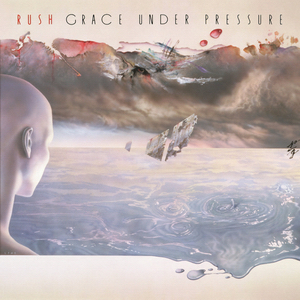
Geddy Lee Weinrib,, known professionally as Geddy Lee, is a Canadian musician, singer, and songwriter best known as the lead vocalist, bassist, and keyboardist for the Canadian rock group Rush. Lee joined what would become Rush in September 1968, at the request of his childhood friend Alex Lifeson, replacing original bassist and frontman Jeff Jones. Lee's first and so far only solo effort, My Favourite Headache, was released in 2000.
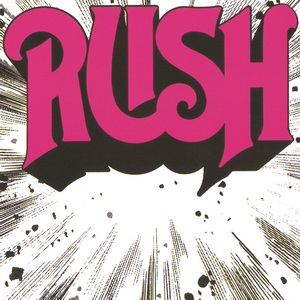
Rush is the debut studio album by Canadian rock band Rush, released on March 1, 1974 by the band's own label Moon Records in Canada and by Mercury Records in the United States and internationally. Their first release shows much of the hard rock sound typical of many of the popular rock bands emerging earlier in the decade. Rush were fans of such bands as Led Zeppelin and Cream, and these influences can be heard in most of the songs on the album.

Fly by Night is the second studio album by Canadian rock band Rush, released in February 1975 on Mercury Records. It was the first Rush album to showcase elements of progressive rock for which the band has become known. It was also the first to feature lyricist and drummer Neil Peart.
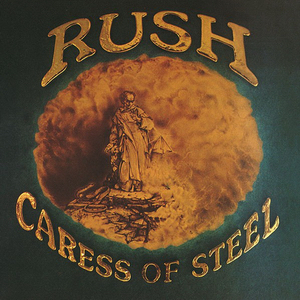
Caress of Steel is the third studio album by Canadian rock band Rush, released in 1975. The album showcases the band's continued evolution to hard progressive rock as opposed to the blues-based hard rock style of the band's first album.
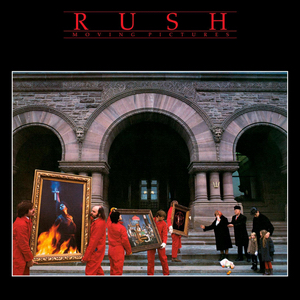
Moving Pictures is the eighth studio album by the Canadian rock band Rush, released on February 12, 1981, on Anthem Records. After touring to support their previous album, Permanent Waves (1980), the band started to write and record new material in August 1980 with co-producer Terry Brown. They continued to write songs with a more radio friendly format, featuring tighter song structures and songs of shorter length compared to their early albums.

Power Windows is the eleventh studio album by Canadian rock band Rush, released on October 14, 1985 by Anthem Records. After touring in support of their previous album, Grace Under Pressure (1984), the band took a break and reconvened in early 1985 to work on a follow-up. The material continued to display the band's exploration of synthesizer-oriented music, this time with the addition of sampling, electronic drums, a string section, and choir, with power being a running lyrical theme. Power Windows was recorded in Montserrat and England with Peter Collins as co-producer and Andy Richards on additional keyboards.

My Favourite Headache is the first and only solo album to date by Geddy Lee of the Canadian rock band Rush. The album was released on November 14, 2000, by Anthem Records in Canada and Atlantic Records outside of Canada. Both the title track and "Grace to Grace" received play on mainstream rock radio, and the album itself peaked at No. 52 on the Billboard 200. The release has a Metacritic score of 58.
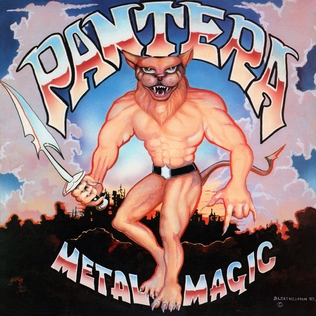
Metal Magic is the debut studio album by American heavy metal band Pantera, released on June 10, 1983 by Metal Magic Records. Like the band's next three releases, this album is musically oriented toward a glam/heavy metal sound influenced by Kiss and Van Halen, rather than the groove metal style they became famous for playing in the 1990s, starting with the release of Cowboys from Hell. It was released on the band's own label and produced by Jerry Abbott, a noted country music songwriter and producer, and father of Dimebag Darrell and Vinnie Paul, who were sixteen and nineteen years old, respectively, at the time of release.
"Between the Wheels" is a song by the Canadian rock band Rush. It was released on their 1984 album Grace Under Pressure.
"Red Lenses" is a song by the Canadian rock band Rush. It was released on their 1984 album Grace Under Pressure. In the album's liner notes, the song's title and lyrics are in lower case only.
"The Camera Eye" is a song by the Canadian rock band Rush. It is the fifth song on their 1981 album Moving Pictures and is the longest song on the album.
"In the Mood" is a song by the Canadian rock band Rush from their 1974 debut album Rush. It was at least two years old when recorded for the album.

"Vital Signs" is a song by progressive rock trio Rush from their album Moving Pictures. The lyrics of the song are about individuality and the pressures of conforming.

Grace Under Pressure Tour is a concert released on Betamax, VHS, Laserdisc, and DVD by the Canadian band Rush. It documents a live concert performance by the band on their 1984 tour in support of the studio album Grace Under Pressure.
"The Weapon" is a song by the Canadian rock band Rush. It was released on the 1982 album Signals and was also released as the fourth single from the album.
"Chemistry" is a song by the Canadian rock band Rush. It was released on their 1982 album Signals. The band's last performance of this song was in 1983.
The Body Electric is a song by the Canadian rock band Rush. It was released as the second single from their 1984 album Grace Under Pressure. It peaked at #56 on the UK charts.

